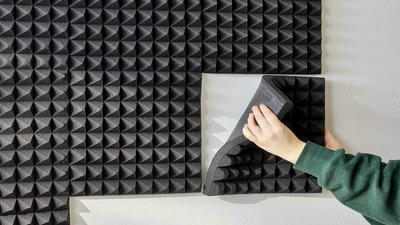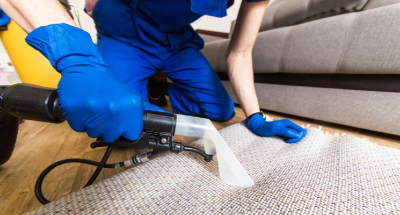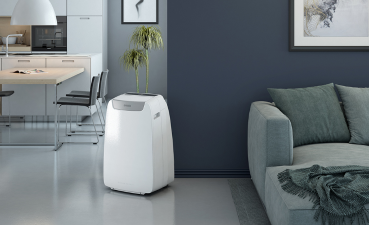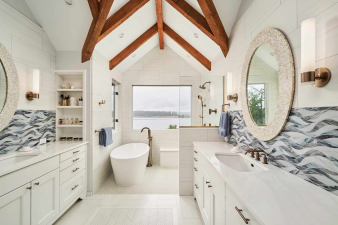Living in an apartment comes with its unique set of advantages and challenges. One of the most common challenges is noise—a factor that can significantly affect your comfort and peace of mind. Whether it is the sounds of bustling city life, loud neighbors, or other disruptive noises, learning how to effectively soundproof your apartment can enhance your living environment.

Understanding Sound and Noise
Before diving into specific soundproofing solutions, it is essential to understand the nature of sound and how it travels. Sound waves are vibrations that travel through the air or other mediums. The ability of sound to penetrate walls, floors, and ceilings depends on various factors, including:
1. Transmission of Sound
Sound can be transmitted in three primary ways:
- Airborne Sound: This type consists of sounds that travel through the air, such as voices, music, or TV noise.
- Impact Sound: This occurs when an object strikes a surface, causing vibrations that are transmitted through the building structure. Examples include footsteps above you or dropping objects.
- Structural Sound: This form of sound travels through the building materials, such as pipes, walls, and floors. Mechanical noises like plumbing or HVAC systems fall into this category.
2. Sound Frequency
Different sounds have varying frequencies. Bass sounds (low-frequency) tend to travel through walls more easily, while higher-frequency sounds (like human voices) can sometimes be absorbed more effectively. Understanding these distinctions can guide your soundproofing approach.
Practical Soundproofing Strategies
Soundproofing does not always require extensive renovations or heavy investments. Here are practical strategies you can implement to reduce noise in your apartment.
1. Use Soft Furnishings
Soft furnishings can absorb sound waves and reduce noise levels in your apartment. Here are some items to consider:
a. Thick Curtains
Thick, heavy curtains can act as sound barriers by absorbing airborne noise. Look for curtains made from dense materials or specifically labeled as noise-reducing.
b. Area Rugs and Carpets
Hard flooring surfaces can reflect sound, making it bounce around the room. Adding area rugs or carpets can significantly dampen noise, especially if they have a thick pile. If you have hardwood or tile floors, consider using larger rugs that fully cover the area.
c. Upholstered Furniture
Adding upholstered sofas, chairs, and cushions can help absorb sound waves. Choose furniture that includes soft fabrics and padding to enhance sound absorption.
2. Seal Gaps and Cracks
Sound can easily enter your apartment through small gaps and cracks around doors, windows, and even electrical outlets. Sealing these openings can significantly reduce noise infiltration.
a. Weatherstripping
Apply weatherstripping around doors and windows to close gaps. This not only helps with soundproofing but also improves energy efficiency.
b. Caulk Cracks
Use acoustical caulk to seal any cracks or gaps around windows, doors, and baseboards. Caulk is flexible and can expand or contract, ensuring a tight seal against sound.
c. Outlet Covers
Consider using foam outlet covers to block noise from coming in through electrical outlets. These covers are easy to install and can be a cost-effective way to minimize sound transmission.

3. Rearrange Your Space
Sometimes, rearranging your furniture can help create a quieter atmosphere within your apartment. Consider these tips:
a. Move Furniture Against Walls
Position larger pieces of furniture, such as bookshelves or sofas, against walls that share space with noisy neighbors. The added mass can help block sound.
b. Use Room Dividers
If you have an open-concept apartment, consider using room dividers to create defined spaces. These can help absorb sound and reduce echo in larger rooms.
c. Create a Quiet Area
Designate a specific corner or room in your apartment as a quiet space. This could be a reading nook or a dedicated office area. Surround this zone with soft furnishings and plants to help absorb sound.
4. Acoustic Panels
Acoustic panels are specially designed products that can significantly reduce noise levels by absorbing sound waves. You do not have to renovate your apartment to use them.
a. Wall-Mounted Acoustic Panels
Install wall-mounted acoustic panels strategically on the walls to absorb both airborne sound and echoes. These panels come in various designs, colors, and sizes, allowing you to find options that suit your decor.
b. Fabric Paneling
Consider fabric paneling options that can be both decorative and functional. These can add aesthetic appeal while reducing noise levels.
c. DIY Acoustic Panels
If you are on a budget, consider making your own acoustic panels using wood frames and sound-absorbing materials, such as foam or insulation. You can then cover them with fabric for a finished look.
5. Create White Noise
Using white noise machines or other methods can help mask unwanted sounds effectively.
a. White Noise Machines
Invest in a white noise machine to generate soothing sounds that can drown out background noise. These machines emit a constant sound that can help your brain focus on these sounds rather than disruptive noises.
b. Fan or Air Purifier
Simple household appliances such as fans or air purifiers can create a similar effect. The steady hum of a fan can drown out sharper, more disruptive noises.
c. Soft Music or Ambient Sounds
Playing soft music or ambient sounds at a low volume can also help mask external noise. Create playlists that include soothing instrumental music, nature sounds, or gentle white noise.
6. Address Floor Noise
Impact noise from footsteps and movement can be quite disruptive in an apartment. Here are strategies to address these types of sounds:
a. Floor Mats
Place floor mats or rugs in high-traffic areas to help absorb impact noise. Doormats at entry points can also help reduce noise when moving in and out of your apartment.
b. Use Felt Pads
If you have furniture with legs that can scratch or create noise on the floor, attach adhesive felt pads to the bottom of chairs, tables, and sofas. This prevents noise from impact and protects your flooring.
c. Consider Soundproof Underlayment
While this requires a bit more effort and investment, consider adding soundproof underlayment if you plan to replace your flooring. This material helps reduce impact noise significantly.
7. Upgrade Your Windows
If external noise is a significant problem, upgrading your windows may be worth considering. While it can be a more significant investment, there are several options to explore:
a. Acoustic Window Inserts
Consider using acoustic window inserts that can be placed over your existing windows. These inserts create an additional barrier against sound without the need for a full window replacement.
b. Weatherproof Window Treatments
Heavy weatherproof curtains or double-layered window treatments can also help reduce the amount of noise that penetrates through windows.
c. Seal Gaps Around Frames
Ensure that there are no gaps around your window frames. Apply caulk or weather stripping as needed to eliminate openings that allow sound to enter.
8. Use Plants for Absorption
Plants can do more than just beautify your apartment; they can also help absorb sound.
a. Large Indoor Plants
Incorporate larger indoor plants, such as rubber trees, fiddle leaf figs, or peace lilies. The leaves and branches can help absorb sound waves and reduce noise levels overall.
b. Vertical Gardens
If space permits, consider creating a vertical garden wall. This not only adds aesthetic appeal but also provides additional surface area for sound absorption.
c. Cluster Plants Strategically
Arrange smaller plants around the room to create natural barriers against sound waves, particularly in areas that may receive direct noise.
Conclusion
Soundproofing your apartment does not have to be a daunting task requiring extensive renovations. By implementing these practical strategies and solutions, you can create a quieter living environment that enhances your overall comfort and quality of life.
Whether you choose to invest in furniture, utilize sound-absorbing materials, upgrade your windows, or simply rearrange your space, each effort contributes to minimizing disruptive noises. With careful planning and creativity, you can transform your apartment into a peaceful sanctuary where you can relax, entertain, and recharge.
If you follow these guidelines and make gradual improvements, you will find that the potential for noise reduction is significant without major interventions.



